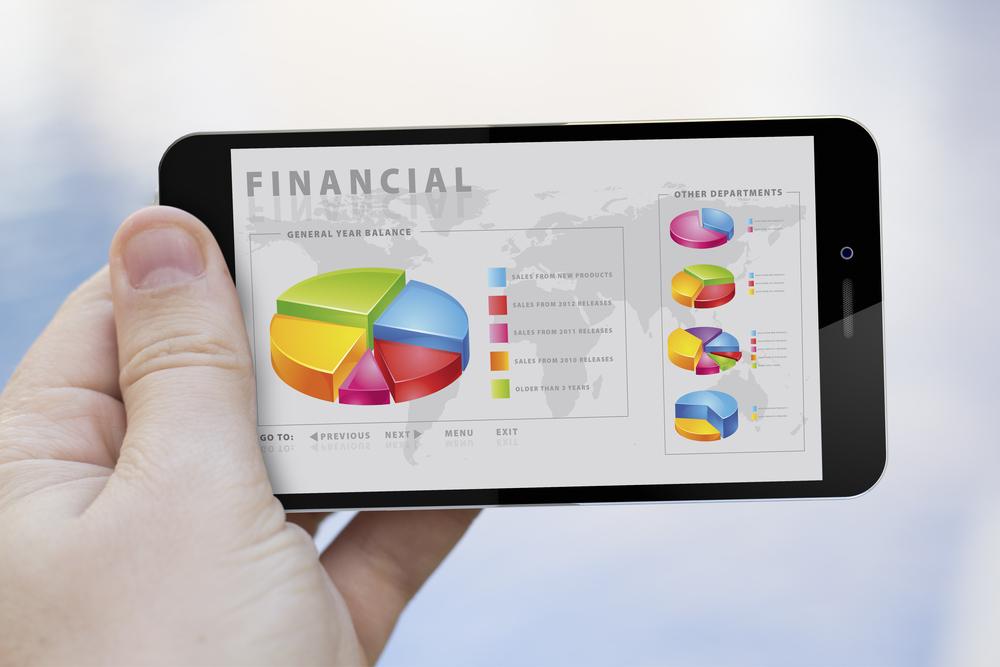Business News Daily provides resources, advice and product reviews to drive business growth. Our mission is to equip business owners with the knowledge and confidence to make informed decisions. As part of that, we recommend products and services for their success.
We collaborate with business-to-business vendors, connecting them with potential buyers. In some cases, we earn commissions when sales are made through our referrals. These financial relationships support our content but do not dictate our recommendations. Our editorial team independently evaluates products based on thousands of hours of research. We are committed to providing trustworthy advice for businesses. Learn more about our full process and see who our partners are here.
15 Accounting Payment Terms and How to Work With Them
Get your customers to pay their bills quickly by understanding these accounting payment terms and strategies.

Table of Contents
When you’re a small business owner, getting paid on time is a top priority. If you don’t set up the right payment terms with your customers, it can lead to late payments, poor cash flow and unnecessary stress in your business.
Fortunately, there are simple steps you can take to improve your billing methods. We’ll look at 15 standard accounting payment terms and how to use them in your business to streamline customer payments and stabilize cash flow.
What are payment terms?
Payment terms are an agreement between you and your customers that details precisely when and how they’ll pay you. When you create an invoice, you’ll note the payment terms for a particular customer and transaction — setting clear expectations about future payments, including how and when you prefer to be paid. Payment terms may also explain penalties for missed or late payments.
Setting up transparent payment terms is essential to ensure customers know what to expect. The more straightforward your payment terms, the easier it will be for customers to pay promptly. They’re also crucial because your small business’s cash flow depends on how quickly your customers pay you. Clearly defined payment terms will make it easier to forecast cash flow, accept new projects and invest in new opportunities.
What are standard accounting payment terms?
Specific payment terms that outline how and when you must be paid are often abbreviated on an invoice. Here are 15 of the most common invoice payment terms you’ll likely encounter.
- 1MD: 1MD denotes a payment credit for a full month’s supply.
- PIA: PIA stands for “payment in advance.” This term indicates that payment must be made in full before the goods or services will be delivered.
- CIA: CIA is short for “cash in advance.” Adding this term means the full payment must be made in cash before the goods or services will be delivered.
- Upon receipt: When you indicate that payment is due upon receipt, you expect payment as soon as the client receives the invoice.
- Net 7: Net 7 means payment is due in seven days.
- Net 21: Net 21 indicates payment is due in 21 days.
- Net 30: Net 30 terms mean payment is due in 30 days. (You may also see Net 60, Net 90 and similar terms.)
- EOM: EOM means payment is due at the end of the month the invoice was received.
- 15 MFI: If you see 15 MFI, payment is due on the 15th of the month following the invoice date.
- 2/10 Net 30: This term means that payment is due in 30 days, but the customer can receive a 2 percent discount for payment within 10 days.
- COD: COD denotes “cash on delivery.” It means the goods or services must be paid for in cash at the time of the delivery.
- CND: CND indicates “cash next delivery.” It means the payment must be made before the next delivery. This payment term is usually reserved for recurring payments for subscription deliveries.
- CBS: CBS stands for “cash before shipment.” It means the balance must be paid before the product is shipped to the customer.
- CWO: CWO means “cash with order.” It means the customer must pay the invoice in full before the goods are produced and shipped.
- Accumulation discount: An accumulation discount is a discount given on a large order.
What should an invoice include?
Your invoices should clearly outline the transaction’s payment terms — including the amount due, when payment must be made and the acceptable payment forms. They should also include general essential information that ensures timely, accurate records.
Include the following information on your invoices to properly convey your payment terms:
- Invoice date: All invoices should include the date you send the invoice.
- Amount due: The invoice should clearly state how much the customer owes you.
- Payment due date: The payment due date is when you expect to receive payment. Some invoices are due immediately, while others specify that payment is expected at a later date. For example, as explained above, if payment is due in 30 days, the payment terms would specify “Net 30.” The payment due date parameters are also referred to as “invoice terms.”
- Invoice number: The invoice number allows customers and your accounting team to track your invoices.
- Acceptable currency: If you frequently work with international clients, you will specify the currency you want to be paid in.
- Acceptable payment methods: The invoice should include a list of acceptable payment methods. For example, you might accept credit cards, online payments and ACH payments.
- Additional payment terms: Your invoice should include any other payment terms the customer should know. For example, you may offer an early payment discount or expect an upfront deposit.
How to use payment terms to your advantage
Businesses have unique situations that may dictate specific payment terms. Consider the following tips on setting payment terms that work to your advantage:
- Set specific invoice terms according to unique customer situations. You may work with specific clients periodically or regularly. The invoice terms you select should make sense for each situation. For example, you may prefer that some clients pay their invoices in full upon receipt. For others, Net 14, 30 or even 90 terms may make sense. Your cash flow situation and client relationships will play a role in these decisions.
- Ask for upfront payments when appropriate. Service providers and small businesses may function better in an upfront payment model. Asking for payment upfront guarantees cash flow, but not all customers may be willing or able to accommodate these terms.
- Request a deposit to help ensure adequate cash flow. If upfront payments aren’t realistic for some clients, consider asking for a deposit. This setup is another good option for freelancers and solopreneurs. For example, requesting a 50 percent upfront deposit before embarking on a larger project ensures some cash flow without overly burdening the client.
- Create monthly retainers for ongoing clients. If you work with clients on an ongoing basis, e.g., a business consultant, consider setting up a monthly retainer they’ll pay to access your services. Under these payment terms, you and your client will agree to a set amount and work parameters.
How to set up effective payment terms
If you struggle to get your clients to pay their invoices on time, you may need to set up more effective payment terms. Here are seven tips for setting up better payment terms for your clients.
1. Use accounting software to set payment terms.
Accounting software simplifies the entire invoicing process, including setting payment terms. You’ll also be able to send invoices more quickly, make fewer errors, track upcoming payments, send automated late payment reminders and easily reconcile your account.
Additionally, accounting software ensures your financial records stay organized and helps you manage your small business taxes. (We’ll detail some specific accounting software solutions below.)
2. Be upfront about your payment terms.
Before working with a new customer, ensure they understand and agree to your payment terms. Explain the terms verbally and include a written description in your employment contract or agreement. This level of clarity and transparency will help eliminate any misunderstandings about how much customers owe you and when payment is due.
3. Be polite when invoicing clients.
Want an easy hack to get your clients to pay you faster? Be polite when invoicing them, and include the words “please” and “thank you” somewhere on the invoice.
A study by FreshBooks found that invoices that include a “thank you” in the invoice payment terms get paid almost 90 percent faster; 45 percent of those invoices get paid in seven days or less, while 12 percent get paid in 14 days or less. Using “please” has a similar result; these invoices get paid 88 percent faster.
4. Accept various payment methods.
Have you ever tried to make a purchase at a store and discovered the business only accepts cash payments? Consider how you felt when you realized this — were you frustrated and annoyed by the inconvenience?
That’s likely how your customers feel if you offer them limited payment options. If you want them to pay on time, make it as easy as possible. Allow them to pay with credit cards, debit cards, online payments, ACH, digital payments or even cryptocurrency payments.
5. Set shorter payment terms when possible.
One of the best ways to get your clients to pay sooner is to shorten the due date. It sounds obvious, but if you give your clients a long time to pay, they’ll usually take it.
For many industries, Net 30 is considered the gold standard for payment due dates. That’s a reasonable time frame; however, if you have a client who regularly ignores your Net 30 due date, you might consider shortening it to Net 21 or Net 14.
6. Be flexible.
While you want your clients to pay on time, your customers — particularly B2B customers — may be experiencing cash flow issues. Some businesses can’t accommodate Net 14 or even Net 30 payment terms and will appreciate more flexible conditions. When possible, accommodate these customers to engender loyalty and dependable payments.
7. Offer a discount for early payment.
Early payment discounts are a common B2B billing best practice that can benefit you and your clients. For instance, your standard terms could be Net 30, but customers receive a 2 percent discount if they pay the invoice within seven days. So, if they owe $5,000 on an invoice, they’ll receive a $100 discount for paying early. These discounts add up over time, so many customers may take advantage of them.
Of course, this type of discount means you’ll accept less money on the invoice. But the improved cash flow may be worth it for your business.
Best accounting software for managing payment terms
Choosing the right small business accounting software can help you better manage invoicing and payment terms; this, in turn, helps build a stronger company on sounder financial footing. Consider the following platforms, which are among the best accounting software solutions for small businesses.
- QuickBooks Online: QuickBooks Online is versatile, cost-effective and one of the most popular accounting software packages around. It offers custom invoicing and allows you to select from numerous payment terms and set default terms for specific clients. Our QuickBooks Online review explains this platform’s customizable invoices and forms, invoice tracking functionality, ability to accept payments via invoices, and much more.
- Plooto: Plooto is an excellent option for businesses that want to streamline their payment processes and clearly communicate payment terms to their clients; this, of course, ensures a smooth accounts receivable process. It also allows you to automate customer payments and supports payments via credit and debit cards, EFT, ACH, e-transfers and more. Our detailed Plooto review explains this platform’s automated invoice management and robust accounts payable tools.
- Zoho Books: Zoho Books is a highly cost-effective solution that can help small businesses automate their accounting processes, invoicing, online payments and more. You can easily send recurring invoices and payment reminders to ensure steady cash flow and quickly convert sales orders or estimates to invoices. You can easily configure new payment terms for customers or set custom payment terms for specific situations. Our comprehensive Zoho Books review outlines this solution’s affordable pricing structure and easy user interface.
Accounting payment terms can work for your business
Managing invoicing and payments is a crucial yet stressful aspect of running a small business. However, setting reasonable payment terms that work for your customers ensures ample cash flow and business continuity. Consider your unique needs and customer relationships, make it easy for customers to pay you, and tailor your invoices and payment terms to keep money flowing steadily.
Matt D’Angelo contributed to this article.














